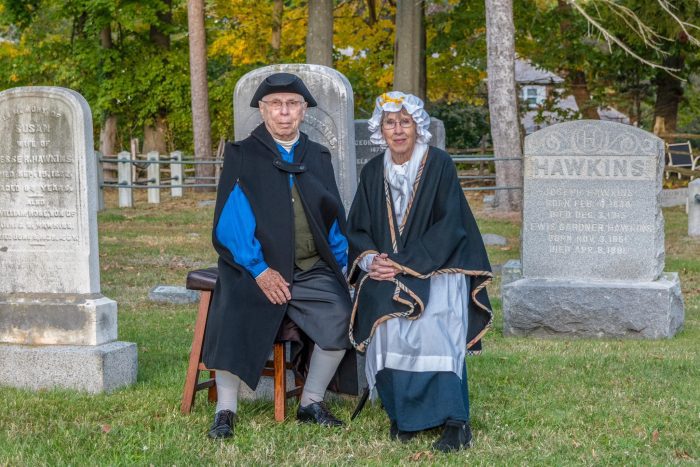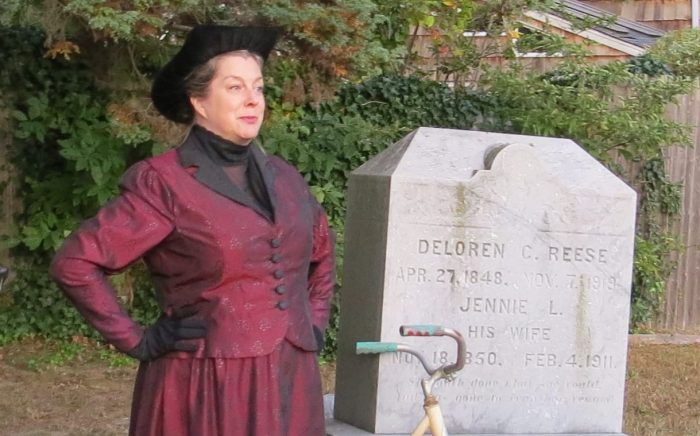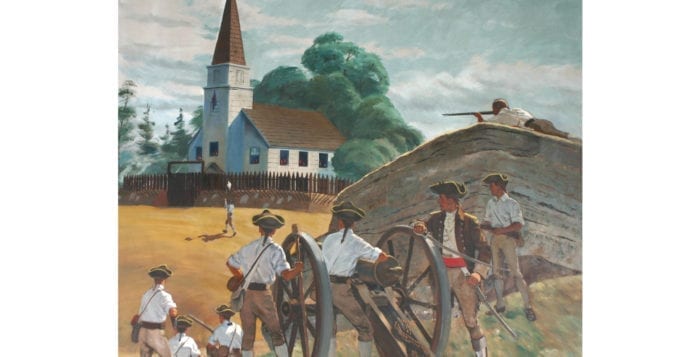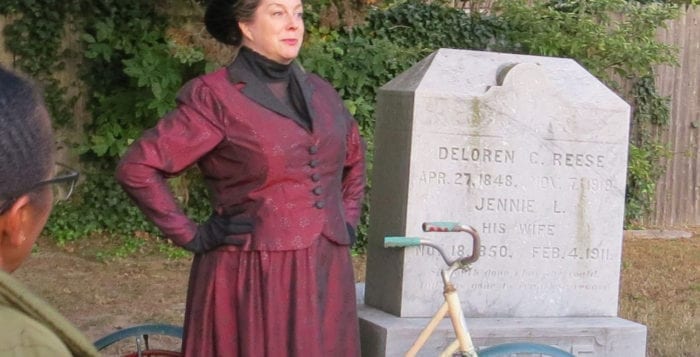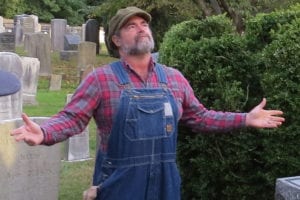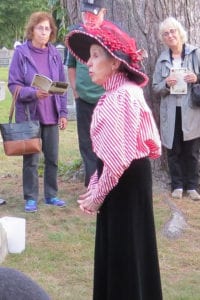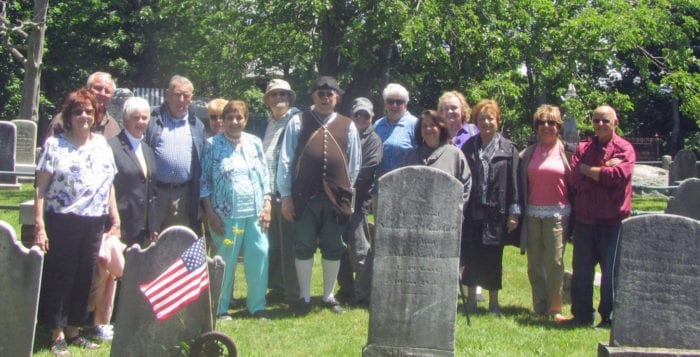By Rita J. Egan
For nearly 30 years, the Three Village Historical Society (TVHS) has brewed up ghostly fun with a twist of history at its annual Spirits Cemetery Tour. The popular event returns on Saturday, Oct. 21 with A Century of Chicken Hill.
Attendees will visit 10 locations in the Caroline Episcopal Church of Setauket and Setauket Presbyterian Church graveyards, where they will learn about the lives of former Chicken Hill residents.
Mari Irizarry, TVHS director, said the society’s educational committee writes and develops the scripts for the annual event. While some dialogues could be reused in the past, all the scripts are original this year.
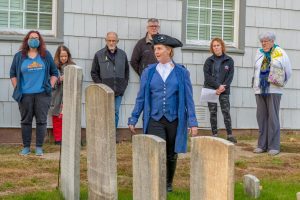
“This year, we’re going to see some characters with names that we definitely know like Ridgeway, like Golden,” Irizarry said. “People who were really active in the Chicken Hill community just 100 years ago, 120 years ago.” Joseph Ridgeway was a key investor in the Rubber Factory which once operated in Setauket, and the Goldens were third-generation Jewish residents in the Three Village area.
During previous tours, actors playing the spirits would talk directly to attendees and describe their character’s life. While a few will do the same this year, overall, guests will walk in on conversations taking place among Chicken Hill spirits.
“You will listen in on a conversation they are having about maybe the shipyard off Shore Road or about the new railway that’s coming to Stony Brook,” Irizarry said.
With descendants of some of the former residents depicted on the tour still living in the area, the society’s director said they had the opportunity to confirm a fact about one spirit with a great-grandchild who lives in Stony Brook. “We don’t get to do that very often,” she said.
This year marks the first Spirits Tour Kimberly Phyfe, TVHS development coordinator, has worked on and will experience. She said she is excited to see it and knows regulars will, too.
“Even if you have come to the Spirits Tour in the past, year after year, you’re going to see new characters, you’re going to meet new spirits,” Phyfe said. “We have different locations. Even though, obviously they’re in the same church graveyards, it’s a totally different experience, because it’s all new scripts and a lot of new actors, a lot of returning actors, too.”
She added that researching using the historical society’s archives with Scott Ferrara, collections and exhibits coordinator, was fascinating.
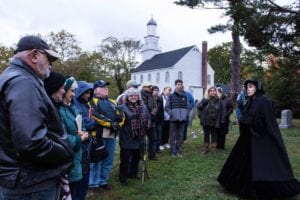
“We were able to reference pieces in our archives that directly relate to and support the scripts of the Chicken Hill characters,” Phyfe said, adding among the items are the Ridgeway family bible, and items listed in a ledger that Rubber Factory laborer and Chicken Hill community member Jacob Hart’s wife, Hannah, bought at the Tyler General Store and more.
“Just knowing that our archives are in direct relation to the program that we are putting on is really incredible to be a part of,” she said. “lt’s living history. It’s not just in a box on the shelf somewhere. We’re able to bring that out into the community.”
Phyfe added characters not depicting a specific person will be based on the types of people they have documentation on.
Among those who played a part in writing and editing the script were Town of Brookhaven Historian Barbara Russell and professional editor Stephanie Sakson.
Sakson has portrayed spirits twice in the past and helped with the scripts. She said for the Chicken Hill dialogues, she fine-tuned them and added some more history and humor. She said researching Chicken Hill was interesting.
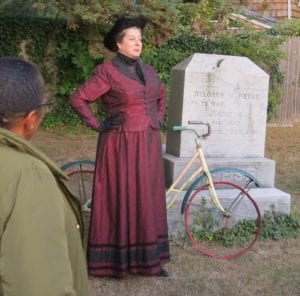
“I really didn’t know anything about Chicken Hill,” the Port Jefferson resident said. “I told my friends ‘you have to come see this!'”
She hopes attendees will gain “an appreciation that history is a living thing” and be inspired to do further research by visiting places such as the historical society and library.
“It’s not like it happened and it’s over,” she said. “You can see around you the effects of history, and how it has shaped how we feel about where we live and gives us an appreciation of how colorful and rich the place where we live is.”
The 29th Annual Spirits Tour will be held on Saturday, Oct. 21 (Rain date Oct. 28). Tours, which are approximately 1 hour and 15 minutes long, leave from the Setauket Presbyterian Church, 5 Caroline Ave., Setauket every 15 minutes starting at 5 p.m. The last tour departs at 7:30 p.m.
Irizarry urges all tourgoers to arrive early, dress for extended time outdoors, wear comfortable walking shoes and bring a flashlight. An exhibit with additional information on Chicken Hill will be on display at Setauket Presbyterian Church throughout the night and complementary apple cider from Ann Marie’s Farmstand in Setauket and donuts donated from local supermarkets will be served.
Tickets in advance at www.tvhs.org are $25. Tickets on the night of the event, if available, are $30. For more information, call 631-751-3730.

